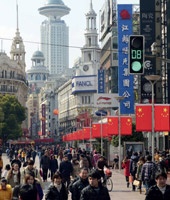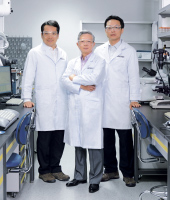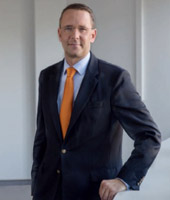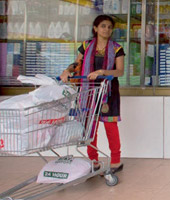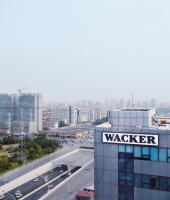Financial-Position Trends: Assets
Current and Noncurrent Assets
Noncurrent assets fell by € 148.5 million to € 4.39 billion (Dec. 31, 2012: € 4.54 billion), a decrease of 3 percent. They accounted for 69 percent of total assets (Dec. 31, 2012: 70 percent). At € 1.95 billion, current assets were almost unchanged (Dec. 31, 2012: € 1.96 billion) and accounted for 31 percent of total assets (Dec. 31, 2012: 30 percent). In 2013, the assets side of the balance sheet was marked by reduced noncurrent assets owing to lower capital expenditures, by depreciation and impairments, and by high noncurrent and current liquidity.
Intangible Assets, Property, Plant and Equipment, and Investment Property
Intangible assets, property, plant and equipment, and investment property totaled € 3.81 billion on the balance sheet date (Dec. 31, 2012: € 3.95 billion). Property, plant and equipment decreased by € 138.8 million between January and December 2013. The main reason for this reduction was lower capital expenditures after WACKER extended the timeline for construction of its production site in Charleston (Tennessee, USA), where WACKER POLYSILICON is investing in a new polysilicon production facility. In 2013, the Group posted capital expenditures of € 501.6 million for property, plant and equipment (Dec. 31, 2012: € 975.0 million), down 49 percent from a year earlier. Of that total, around € 250 million was spent on the new plant in Tennessee. Additional investments funded the expansion of business at WACKER SILICONES, WACKER POLYMERS and Siltronic. The lion’s share of WACKER’s capital expenditures was for operations outside Germany. Depreciation amounted to € 527.4 million in 2013 and exceeded capital expenditure. WACKER also recognized impairments of € 37.0 million, particularly for noncurrent assets at Siltronic no longer in use. Exchange-rate movements decreased the value of noncurrent assets by € 70.3 million.
Investments in Joint Ventures and Associates Accounted for Using the Equity Method
Investments in joint ventures and associates accounted for using the equity method decreased from € 41.0 million to € 18.9 million. This 54-percent decline was mostly due to investment losses from the 300 mm wafer joint venture with Samsung.
Noncurrent Financial Assets and Securities
Other noncurrent assets rose 3 percent to € 562.2 million (Dec. 31, 2012: € 544.7 million) and included loans to joint ventures and associates totaling € 231.4 million (Dec. 31, 2012: € 256.2 million). Exchange-rate differences had a negative overall impact of € 15.8 million on noncurrent financial assets. New investments with maturities of more than one year increased noncurrent securities by € 59.7 million to € 120.8 million. Other noncurrent assets also included noncurrent derivative financial instruments, noncurrent tax receivables, and deferred tax assets. Deferred tax assets totaled € 165.7 million as of December 31, 2013 (Dec. 31, 2012: € 182.0 million), primarily as a result of temporary differences from provisions for pensions.
Current Assets
At € 1.95 billion, current assets were almost unchanged compared with the prior-year figure of € 1.96 billion. Inventories were substantially reduced compared with year-end 2013 levels. They totaled € 616.9 million as of December 31, 2013 (Dec. 31, 2012: € 712.1 million), down 13 percent from a year earlier. Trade receivables remained unchanged, amounting to € 614.1 million as of December 31, 2013 (Dec. 31, 2012: € 600.2 million). The share of total assets accounted for by inventories and trade receivables together was almost unchanged compared with the previous year. It amounted to 19 percent (Dec. 31, 2012: 20 percent).
Other current assets rose by 11 percent to € 714.3 million (Dec. 31, 2012: € 644.9 million) and mainly comprised securities, and cash and cash equivalents. New investments in noncurrent securities reduced the proportion of current securities in the portfolio. At the balance sheet date, current securities were recognized in the amount of € 71.9 million (Dec. 31, 2012: € 243.0 million). Liquid funds rose from € 192.6 million to € 431.8 million at year-end 2013, primarily because of the cash inflow generated by the US$ 400 million loan taken out by the company. At the same time, there was an outflow of liquid funds for capital expenditures, the dividend payout and loan redemptions. Other current assets also include income tax receivables and VAT receivables totaling € 71.6 million, derivative financial instruments in the amount of € 19.6 million and other current receivables amounting to € 119.4 million.
